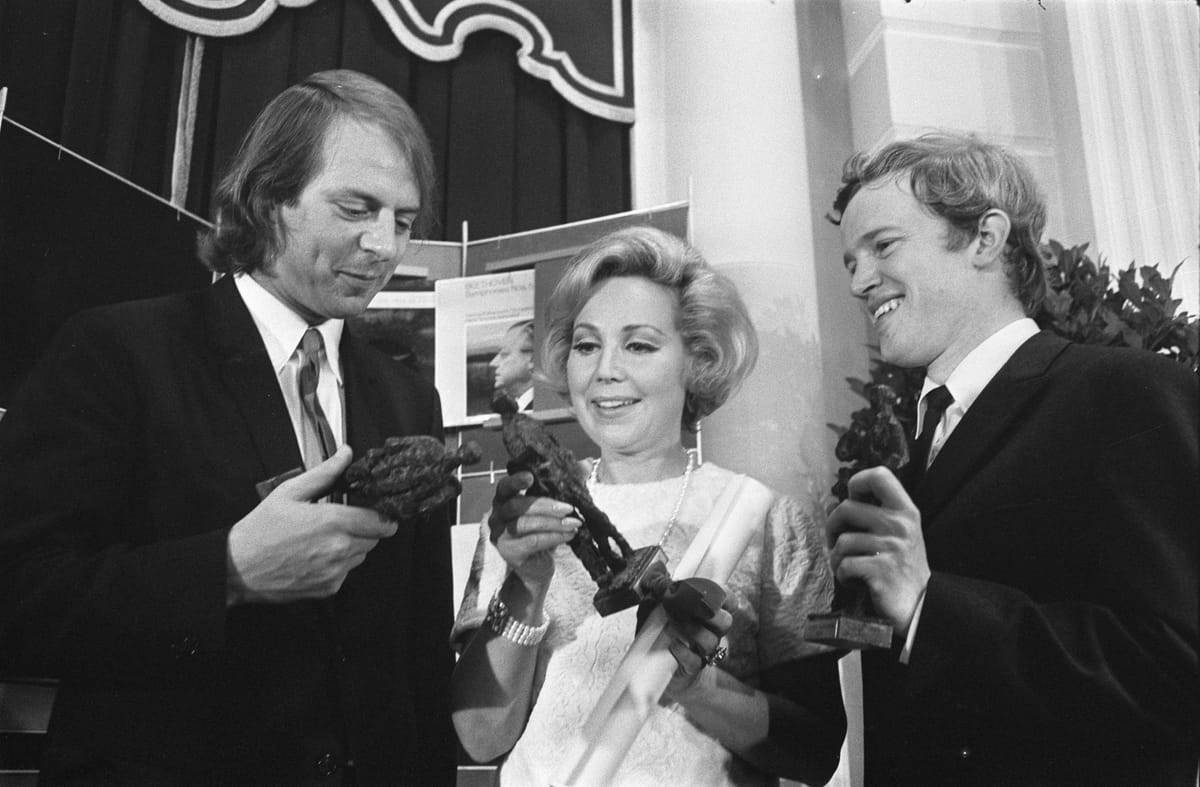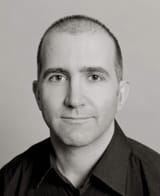Karlheinz Stockhausen Composes the Cosmos

His seven-opera cycle, “Licht,” shows that he was not only a master of far-out spectacle but also a composer of impeccable craft.
In 1991, Karlheinz Stockhausen, the mystical showman of the musical avant-garde, was commissioned to write a string quartet for the Salzburg Festival. Being Stockhausen, he offered up the “Helicopter String Quartet,” in which musicians play while flying around in helicopters. The work doubles as a scene in the composer’s seven-part operatic cycle, “Licht,” written between 1977 and 2003. The idea of spending state funds on helicopter music did not sit well with the Austrian Green Party, which attacked the project as wasteful. Under political and financial pressures, Salzburg withdrew, and the première took place at the Holland Festival, in Amsterdam, in 1995. I was there, and found the experience striking but ultimately monotonous—a lot of frantic tremolo competing with the whirr of rotor blades. This spring, the Holland Festival staged the piece again, in the context of a three-day survey of scenes from “Licht.” The quartet remains tedious, but other episodes are so packed with wonder that all doubts fall away.
The argument about wastefulness deserves a hearing. The Holland Festival production, which was titled “Aus licht,” reflects a tendency toward gigantism in the modern performing arts—multimedia spectacles that often impress more through sheer scale than through artistic coherence. Typical of the genre is Heiner Goebbels’s “Everything That Happened and Would Happen,” which recently played at the Park Avenue Armory. A sprawling meditation on war, it looked more like a technical rehearsal than like a finished product, with drop cloths randomly raised, lowered, and dragged about. An international circuit now exists for this aesthetic of vastness, using such cavernous venues as the Armory, Tate Modern, and the Jahrhunderthalle, in Bochum, Germany. “Aus licht” unfolded at the Gashouder, a former gas-storage facility that is part of the Westergasfabriek culture park, in northwest Amsterdam. The trend betrays an anxiety about the fate of traditional arts in an age of screen culture: the assumption seems to be that only colossal doings will get audiences to look up from their handheld devices.
In the case of Stockhausen, though, only the colossal will suffice. “Aus licht” turned out to be the kind of inexplicable marvel that one waits half a lifetime to see. It induced shivers not just in its awesome moments—trumpeters intoning a chorale from balconies; brass players engaging in military-style skirmishes in the aisles; angel voices singing an extraterrestrial liturgy—but also in its unexpectedly intimate passages, its glimpses of the composer’s shattered childhood. “Aus licht” was one of the great theatrical events of the new century; it would have been even greater without the aerial extravagance.
The operas of “Licht” are named, in German, for the days of the week. First in the series was “Donnerstag,” which had its première at La Scala, in Milan, in 1981. The last to emerge was “Mittwoch,” which was first seen in Birmingham, England, in 2012, five years after Stockhausen’s death. At first, the Holland Festival had hoped to stage all seven operas, but the logistical challenges proved insurmountable. Instead, a production team led by the French-Lebanese director Pierre Audi assembled fifteen hours of excerpts—a little more than half of the cycle. The musical director was the Dutch flutist Kathinka Pasveer, who lived and worked with Stockhausen. She spent three years supervising an army of some four hundred performers, many of them students at the Royal Conservatory of The Hague. They essentially majored in Stockhausen.
“Licht” lacks a conventional plot, although it does have an elaborate mythology, which Stockhausen culled from various religious traditions and esoteric practices, including Theosophy and Anthroposophy. Its principal characters are the archetypal figures Michael, Lucifer, and Eve, who represent the cosmic forces of creation, rebellion, and rebirth. These roles are not only sung by vocalists but also acted out by instrumental soloists, who must memorize their parts and execute precisely choreographed movements. Michael’s primary instrument is the trumpet; Lucifer’s, the trombone; Eve’s, the basset horn. Choruses, wind bands, percussion ensembles, and swaths of electronics join the melee.
“Aus licht” began with two big scenes from “Donnerstag”: “Michael’s Youth” and “Michael’s Journey Around the Earth.” An autobiographical dimension becomes clear at once. Stockhausen’s childhood was nightmarish: his father, a schoolteacher who embraced Nazi ideology, was killed on the Eastern Front, and his mother, who suffered from depression, was murdered in the Nazi euthanasia program. By his mid-teens, when Stockhausen was a medical orderly tending to disfigured, dying soldiers, he had become an orphan. In the opera, the Eve character is given a lethal injection while the Lucifer figure barks out such slogans as “Sacrifice for the homeland!” Michael, standing in for the composer, escapes into a world of musical invention and virtuosity. He triumphantly passes his exams and embarks on a global tour, exploring the musical traditions of America, Japan, Bali, India, Central Africa, and Israel.
Stockhausen made his name in the fifties, with works of extreme density and complexity. In “Licht,” he adopted a more spacious, unhurried style. The entire score is based on a single “super formula,” which supplies thematic material for the three protagonists. Although the compositional method is related to mid-century serialism, the formula tends to yield tonal-sounding motifs, with Michael’s theme hovering around D minor. This late-period Stockhausen harmony is on breathtaking display at the outset of “Michael’s Journey Around the World”: horns, tuba, and tam-tams emit foghorn chords while the trumpet unfolds an elegant, agile, jazz-tinged melody. To be sure, “Licht” includes many spells of dissonant chaos, but its spirit is all-embracing. The ecstatic richness of the music recalls the supercharged religiosity of Olivier Messiaen, who taught Stockhausen for a time.
The second day of “Aus licht” focussed on Lucifer, who, in keeping with Theosophical doctrine, is an ambiguous figure, bearing knowledge of both good and evil. His tour-de-force scene is “Lucifer’s Dance,” from “Samstag,” in which he presides over an eighty-piece wind band. The players are arrayed in a vertical formation suggesting a human face. The score calls for them to wave their instruments to and fro, in order to convey the twitching of an eyebrow or the mouth. Stockhausen took inspiration from American marching bands; the University of Michigan Symphony Band participated in the première of “Samstag,” in 1984. The scene ends in an anarchic bacchanal for full ensemble, with bass tubas bellowing a portion of Lucifer’s theme. As in “Paradise Lost,” Lucifer cuts an appealing figure.
The final day began with a climactic battle between Lucifer and Michael (“Invasion—Explosion,” from “Dienstag”) and ended with scenes of reconciliation, out of “Mittwoch” and “Sonntag.” In “World Parliament,” a chorus expounded a politics of love. In “Orchestra Finalists,” soloists engaged in boisterous competition. Members of the Pelargos Quartet went aloft for the “Helicopter String Quartet.” Finally, “Angel Processions” offered a fantastically expressive interweaving of unaccompanied voices: small choral groups from the Cappella Amsterdam proceeded through the Gashouder, singing in Hindi, Mandarin, Spanish, English, Arabic, Kiswahili, and German, while an invisible “tutti choir” issued a floating mist of static harmony. This coda demonstrated that Stockhausen was not only a master of far-out spectacle but also a composer of impeccable craft. The luminous intricacy of the writing harks back to Renaissance polyphony even as it gazes toward a future paradise.
Pierre Audi’s production did not erase memories of the Birmingham “Mittwoch,” in which the director, Graham Vick, mounted a glorious psychedelic circus. In “World Parliament” and “Orchestra Finalists,” the Amsterdam performers fell short of the go-for-broke exuberance of their Birmingham counterparts. Then again, Audi’s approach felt more integrated—better attuned to the composer’s spiritual vision. The mood was more meditative than carnivalesque. A mesmerizing lighting scheme, by Urs Schönebaum, established a properly cosmic vibe: multicolored tubes zigzagged through the upper reaches of the space.
“Licht” is not all otherworldly bliss. Stockhausen’s world view has its spooky aspects. His portrayal of Eve recycles Romantic stereotypes of the eternal feminine, and his call to produce “healthier, more beautiful, more musical human beings” smacks of early-twentieth-century eugenics. (So Robin Maconie points out in his book “Other Planets,” the authoritative English-language study of Stockhausen.) Audi, to his credit, refused to paper over the creepiness. A scene in which a Pied Piper flutist leads a children’s chorus into the hereafter is chilling, even as it ends with a majestic image of the children raising their arms like birds. The staging of “Invasion—Explosion” capitalized on the militaristic violence inherent in Stockhausen’s writing for brass. Squads of trumpeters and trombonists, outfitted in combat gear and wearing mutes like auxiliary weapons, scampered up and down the darkened aisles.
Whenever “Aus licht” threatened to tilt over into cultish ritual, an unfettered joy in music-making broke through. Alongside the hieratic tableaux, I will long remember the virtuoso turns by solo performers, who gave this suprahuman work a human immediacy. Jerome Burns swaggered brilliantly through the trumpet concerto that is “Michael’s Journey”; Pia Davila gave high-dramatic heat to the role of Eve; Marta Goméz Alonso brought soulful precision to an extended flute solo in “Kathinka’s Song.” More than once, I saw members of the company hanging around outside the venue, attracting knots of admirers. Before “Angel Processions,” singers garbed in utopian white answered questions from attendees. Nearby, a drum circle was playing in the park, and for a moment I thought that this group, too, was preparing for “Licht.” The gap between reality and Stockhausen is not as wide as it appears.
Republished with permission from The New Yorker.





